The Best Paper Organization System (If You're Drowning in Clutter).

The best paper organization system isn’t really a system at all. That’s because the easiest way to organize paperwork is not to organize it. 🤷
Hear me out… I’ve been doing this for years and it’s both freeing and life-changing.
I’ve spent years setting up and trying out any paper organization system I thought would work… and every time I found one that worked.
It only stuck for a few days or a week max.
Then I’d get busy, I’d get behind and next thing you know, there’s a MASSIVE backlog and I can’t catch up (or just procrastinate so I don’t have to).
When I started working with my personality instead of against it…
- I realized that I love setting up systems.
- I love buying planners, and file folders, and organizers.
But when I get busy. I’d rather scroll Instagram than actually maintain a paper organization system or handle paperwork.
I used to think of that as a personality flaw that I had.
But when I learned how to work with my personality.
Everything got so much easier and maintaining the system became easy. The paper organization system I use now is created to eliminate 98% of the papers and to still have a way to “recall” the information on the papers if I need it later.
Here’s the system I use now…
Bills and Paperwork That Need Action From You
Use a Budget Box and keep it within easy reach.
First, pick a spot where you’ll leave your budget box…
I keep mine in the cabinet above my coffee nook in the kitchen, central to both my schedule book (on the kitchen counter) and the trash where I sort the mail that comes in. You want your budget box to be somewhere that makes it easy to toss bills into when you sort mail. Hint, you shouldn’t have to go up or down stairs to do this.
A common location for readers is in a kitchen drawer or cabinet. Even if you use a kitchen drawer though, you want to have it in a removable box so that you can take it out when you work on it once a week (I do it when I do our budget meetings).
In the box…
You’ll need stamps, envelopes, a calculator, a pen, and your checkbook ( if you use our “check holding” account system. If you don’t, you should!). Then leave your “check holding” check book in the box.
Hint: By keeping a separate “check holding account” for checks you write, or money that doesn’t come out right away your balance will always be accurate. And you won’t be “surprised” (when you forget about a check) or overdraft your main account because the money is already taken out.
If you use the Easy Budget Binder, put that in the box as well.
I love using a smaller 6 x 8 box to store this for a cabinet. If you do that, then you also include a three-compartment file sorter. Which means your envelopes can sit up straight in the back and I put my stamps labeled in the first envelope. Like this:
Then I leave my Budget Binder (Which I printed on half paper (I print it 1/2 of the regular size) and keep it in a mini 3-ring binder.) in the middle section (or rung) of the file sorter.
The first section of the file sorter is for pending bills or things that can’t be thrown out yet. (But my goal is to always throw these out as soon as possible).
I stick the calculator and the pens in the space before the three-ring sorter.
Once a week, when I do a budget meeting, I flip through the bills and mail in the budget box. New bills and pending bills from prior weeks.
Dealing With Information You Might Need One Day
Then, I ask myself: “what do I have to do to toss this?”
For some items, I just need to know that I’ll have the information if I need it one day. For those, I snap a cell phone photo and then upload it into Evernote. (I use Evernote because you can search photos using text and it will return your photos based on your text search results).
So, If you have a snapshot of correspondence from a rental unit you own, you can upload that and then search “rental” later in Evernote and it will read the photo with the words rental in it.
Sometimes, I just need to leave a note in my planner for an upcoming event with all pertinent info.
Sometimes, I just toss it.
Sometimes, I need to figure out and then follow the steps to deal with the issue.
So the steps for a medical bill that the insurance isn’t paying might look like this…
- I need to call, and possibly speak to a supervisor.
- I make notes directly on the bill or paper as I work on it.
- Find out what documentation I need to provide.
- Make arrangements to get that documentation to them.
- I take a picture on my iPhone of what I’ve sent and file it in my Evernote account. (again, I don’t organize these, I just stick them in Evernote and let the photo search do its job when I need them again).
- Once done, I throw out that bill.
Paper Organization System
Create a Bill Box
Want to create your own Bill Box like mine? Here’s what I use:
Mail: Sort over trash, transfer action items to the budget box.
If you don’t have 5 minutes to sort through mail, leave it right in the mailbox. When you bring in the mail, sort it immediately while standing over the trash bin.
Anything that doesn’t require action, goes straight into the trash.
If it requires action, write all pertinent information in your schedule book (or leave it on top of your schedule book) to enter into your planner the next time you schedule).
If it’s a bill to be paid, a check to be cashed, etc, place it in your budget box for your next scheduled budget meeting to handle.
I sign up for equal payment plans on utilities that allow me to then toss the statements when they come in. If for some reason I need to review that again, I can just look online and check.
School Paperwork.
Treat the school folders similar to the mail, only check it when you have time to sort it.
If that means you miss a day or two, that’s fine. But this should be a part of your paper organization system if it applies to you.
If it requires schedule book actions (like an awards ceremony, etc.) place it directly in your schedule book or planner or lay it on top for the next time you schedule book. When clear instructions are added in the planner, discard the paper.
If the school paperwork requires budget box action (like a check for a donation, fundraiser, etc.) place it directly in your budget box.
If it’s completed school work, you have two options:
You can throw it in the trash (if both you and your kid aren’t sentimental) (or have them pick their favorite for prominent display on the clipboard or fridge this week and toss the rest in the trash. When next week’s amazing project goes up, you can trash last weeks.
Or… you can have a container or kitchen drawer designated as the schoolwork drawer.
Take everything else out and stick it in that drawer. At the end of the school year, we pull it all out (it’s a lot!) look through it all, and keep the best 10 things, and take iPhone photos of them.
We put it all in the drawer and tell my little artists that Mommy loves to be able to look through the drawer when they’re at school and I miss them.
(You can either just leave those photos in your cloud, or you can include it in art projects like scrapbooks or photo books etc.)
Important Documents.
Things that require you to have paper copies…
I keep in a red file (also called a ready file) divorce and marriage records, birth certificates, ss cards, education diplomas or transcripts, etc, life insurance policies, passports.
I also keep a master list of accounts there (bank accounts, utilities, bills, etc) with contact numbers so if I ever have a question or need something I can easily contact them and have all important info at my fingertips. (This is also helpful if God forbid something happens to you, it’s a massive help to the person who needs to figure out how to handle your finances)
Taxes.
A huge part of my paper organization system.
Keep everything online. Save them online, and when they aren’t online naturally (like you get them in the mail) take a photo with your smartphone and upload them. Evernote or Asana are also popular options to use for this, I suggest starting with the one you’re used to.
If you don’t use any of them, Evernote is my favorite because it lets you search text and handwriting through photos. So, if you take an iPhone photo of a Post It Note with a phone number and the person you talked to and upload it… you can easily find it later by searching that info.
Problem Paperwork.
AKA other important paperwork. This most often comes up with lawsuits, custody hearings, etc.
Evernote is what I use for this, but you can use Evernote, Google Drive, Asana, or Trello. Use whatever you’re used to using but, if you’re new to all of this, use Evernote. It’s free and they have an app too.
You can either type in notes as you deal with the problem or just write notes on a Post It Note (or scrap paper) and upload the photo to the notebook.
Hint: create one individual notebook for each problem and upload them right away as you deal with them.
I usually put these in my bill box and then upload them during budget meeting day. But I keep the problem paperwork in my bill box (even after I’ve uploaded it to Evernote) so that I have that reminder to take some action on it every week.
Stationery Box (optional).
I adore written notes and cards. I love receiving them and I love sending them. So, I add them to my paper organization system.
This is super antiquated, but I figured I’d throw it in if you’re weird like me.
I have a stationery box with my address stamp, a stamp pad, wax seal bar and wax stamp, and custom stationery (I use Love In Little Squares from Erin Condren). I also include in that box stamps and an angled pen that makes anyone’s handwriting exceptional.
I use the custom stationary for everything, thank you cards, birthday cards, sympathy cards, get well cards, etc.
Hint: One of my favorite ways to use it is to send playdate invitations to school with my kids. If they have a school friend they want to see outside of school, I can write an introduction on the card (which has our family photo on it), explain that the kids are friends, and invite the mom to text me or call me if they want to set up a playdate. I also use them for new neighbors etc). Having the family photo on the card just feels more personal to me.
When I get a note I want to respond to, I stick it in the budget box to remind me to write back (since I’m guaranteed to see the content of that box once a week) and then I can just grab my stationery box and write back.
P.S. On a related note, if you set up a master account sheet in your budget box, take the extra 5 minutes to set up 1Password or Last Pass so you never have to remember or reset your password again! It holds all of your passwords and works across all devices like cell phones, laptops, and tablets.
P.P.S. Feeling overwhelmed? No sweat. Paperwork is NOT where I want you to start if you’re feeling overwhelmed.
You have my permission to ignore it for now and fix your foundation of home management first because that’s going to give you immediately less stress, more time, and more money for the least amount of effort.
Paperwork is considered to be more of an advanced step.
P.P.P.S. You asked for it and I’m delivering! Starting NOW, you can grab the Trashed to Total Home Transformation Survival Guide For FREE!
It teaches you step by step how to work with your personality to not only set up home routines that will work (no matter how many times you’ve failed in the past), but that you’ll stick to… long after the pandemic is over.
We’ve taught hundreds of thousands of people how to use bare minimum consistent effort to completely transform their home (and life!). You’re up next.

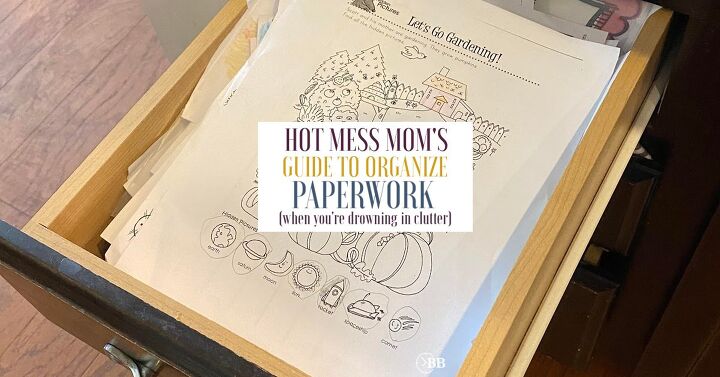




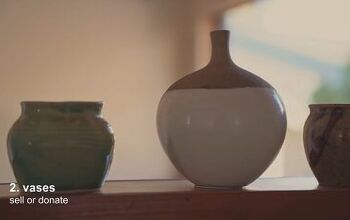
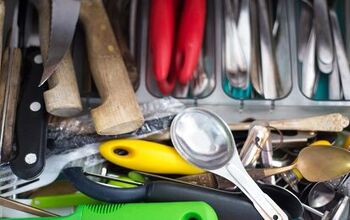
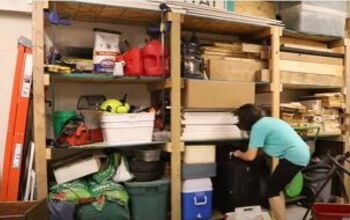
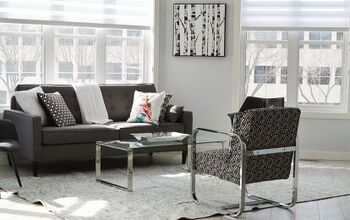

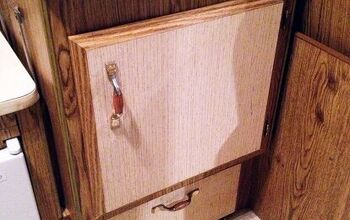



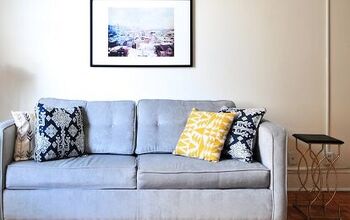

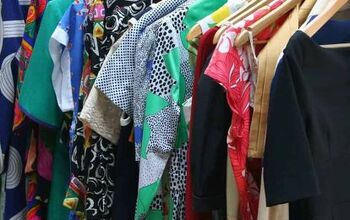


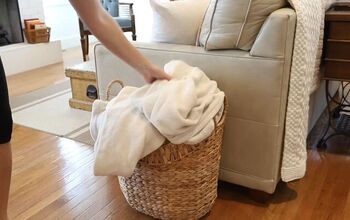



Comments
Join the conversation